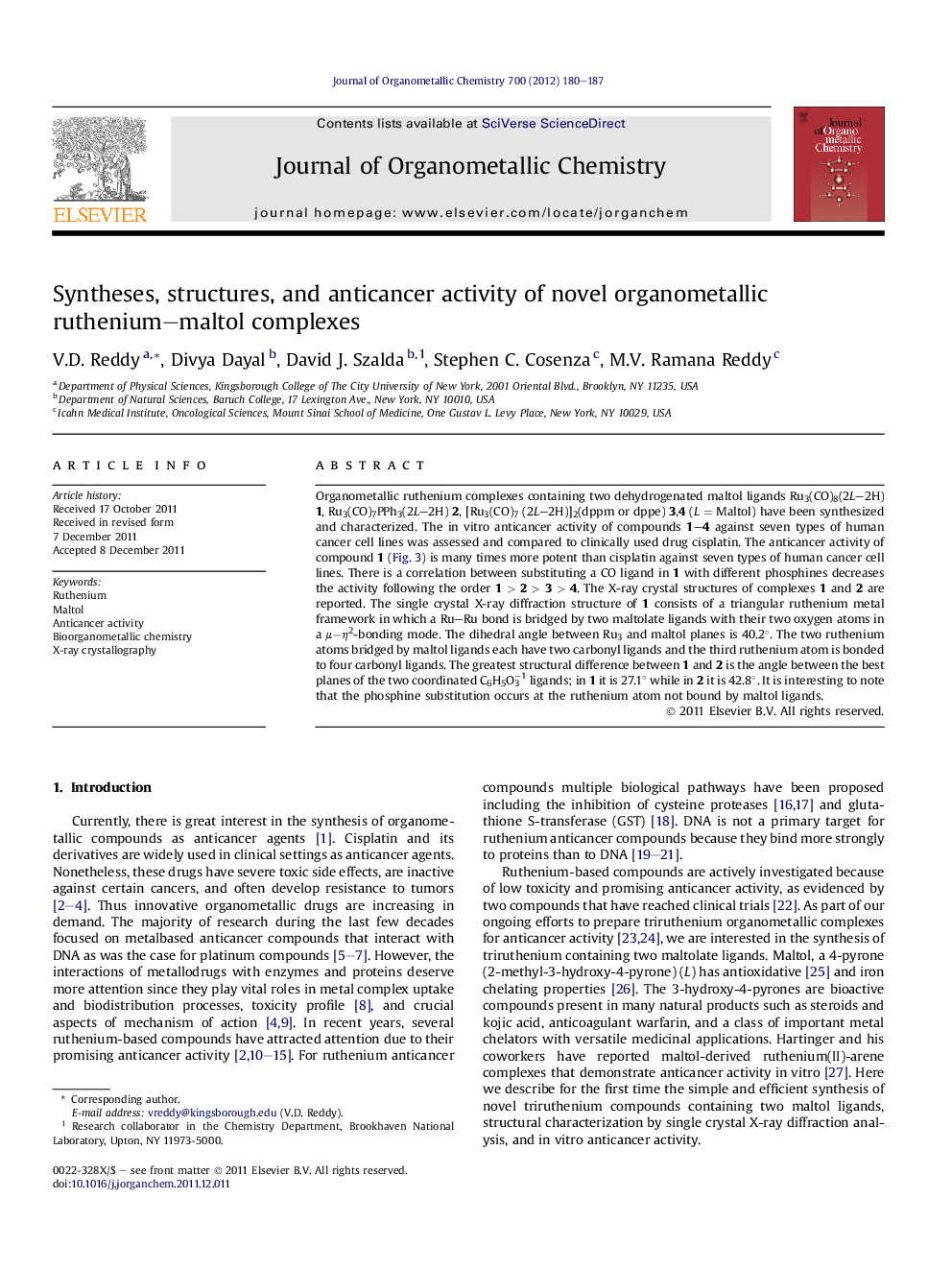| Article ID | Journal | Published Year | Pages | File Type |
|---|---|---|---|---|
| 1323519 | Journal of Organometallic Chemistry | 2012 | 8 Pages |
Organometallic ruthenium complexes containing two dehydrogenated maltol ligands Ru3(CO)8(2L–2H) 1, Ru3(CO)7PPh3(2L–2H) 2, [Ru3(CO)7 (2L–2H)]2(dppm or dppe) 3,4 (L = Maltol) have been synthesized and characterized. The in vitro anticancer activity of compounds 1–4 against seven types of human cancer cell lines was assessed and compared to clinically used drug cisplatin. The anticancer activity of compound 1 (Fig. 3) is many times more potent than cisplatin against seven types of human cancer cell lines. There is a correlation between substituting a CO ligand in 1 with different phosphines decreases the activity following the order 1 > 2 > 3 > 4. The X-ray crystal structures of complexes 1 and 2 are reported. The single crystal X-ray diffraction structure of 1 consists of a triangular ruthenium metal framework in which a Ru–Ru bond is bridged by two maltolate ligands with their two oxygen atoms in a μ−η2-bonding mode. The dihedral angle between Ru3 and maltol planes is 40.2°. The two ruthenium atoms bridged by maltol ligands each have two carbonyl ligands and the third ruthenium atom is bonded to four carbonyl ligands. The greatest structural difference between 1 and 2 is the angle between the best planes of the two coordinated C6H5O3−1 ligands; in 1 it is 27.1° while in 2 it is 42.8°. It is interesting to note that the phosphine substitution occurs at the ruthenium atom not bound by maltol ligands.
Graphical abstractNovel organometallic ruthenium-maltolate complexes were prepared and structurally characterized. In vitro anticancer activity of compound 1 in different human cancer cell lines is many times more potent than widely used clinical drug cisplatin.Figure optionsDownload full-size imageDownload as PowerPoint slideHighlights► Novel organometallic ruthenium-maltolate complexes are synthesized and crystallographically characterized. ► Compound 1 is the first example of a structurally characterized triruthenium cluster containing two maltolate ligands bridging the same Ru-Ru edge. ► The anticancer activity of compound 1 is many times more potent than the clinically used drug cisplatin against seven types of human cancer cell lines.
